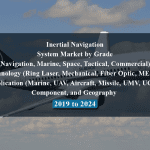OVERVIEW
The Vertiports Market is currently valued at USD 0.4 billion in 2024 and will be growing at a CAGR of 62.1% over the forecast period to reach an estimated USD 10.7 billion in revenue in 2029. Vertiports are crucial infrastructure hubs facilitating the burgeoning urban air mobility sector. These specialized facilities serve as pivotal points for the takeoff, landing, and maintenance of electric vertical takeoff and landing (eVTOL) aircraft, enabling efficient and sustainable aerial transportation within urban landscapes. Designed to accommodate the unique needs of aerial mobility, vertiports integrate advanced technologies for seamless operations, including charging stations, passenger terminals, and automated management systems. As cities embrace the concept of aerial transportation to alleviate congestion and reduce carbon emissions, vertiports emerge as essential nodes in the future urban transportation ecosystem, fostering connectivity and accessibility while reshaping the urban skyline.
The increasing urbanization and congestion in major cities worldwide are pushing the need for innovative transportation solutions, prompting governments and private enterprises to invest in urban air mobility infrastructure. Additionally, advancements in electric propulsion technology and the development of eVTOL aircraft are making air travel more feasible and environmentally sustainable, driving demand for vertiports as essential hubs for these aircraft. Moreover, growing concerns about climate change and the need to reduce greenhouse gas emissions are incentivizing the adoption of electric-powered aerial transportation, further bolstering the vertiports market. Lastly, the rise of on-demand and autonomous air mobility services is spurring the establishment of vertiport networks to support the seamless integration of air taxis and drones into urban transportation systems, driving further expansion and innovation in the market.
Market Dynamics
Drivers:
The increasing urbanization and congestion in major cities worldwide are pushing the need for innovative transportation solutions, prompting governments and private enterprises to invest in urban air mobility infrastructure. Additionally, advancements in electric propulsion technology and the development of eVTOL aircraft are making air travel more feasible and environmentally sustainable, driving demand for vertiports as essential hubs for these aircraft. Moreover, growing concerns about climate change and the need to reduce greenhouse gas emissions are incentivizing the adoption of electric-powered aerial transportation, further bolstering the vertiports market. Lastly, the rise of on-demand and autonomous air mobility services is spurring the establishment of vertiport networks to support the seamless integration of air taxis and drones into urban transportation systems, driving further expansion and innovation in the market.
Key Opportunities :
Key opportunities abound in the vertiports market, fueled by technological advancements and evolving urban transportation needs. One significant opportunity lies in the development of vertiport infrastructure in emerging economies, where rapid urbanization is creating demand for efficient and sustainable transportation solutions. Additionally, the integration of vertiports with existing transportation networks, such as airports and public transit systems, presents opportunities for seamless multimodal connectivity, enhancing overall transportation efficiency and convenience. Furthermore, the emergence of new business models and partnerships, including collaborations between vertiport operators, eVTOL manufacturers, and ride-hailing companies, opens doors for innovative service offerings and revenue streams. Moreover, the potential expansion of vertiports beyond urban centers into suburban and rural areas could unlock new markets and address transportation gaps, catering to a broader range of passengers and cargo needs.
Restraints :
Regulatory challenges surrounding air traffic management and urban airspace integration present significant barriers, as the industry navigates complex legal frameworks and safety standards governing aerial operations in urban environments. Moreover, concerns regarding noise pollution and public acceptance of eVTOL aircraft could impede the widespread adoption of vertiports, particularly in densely populated areas where community engagement and environmental impact assessments are crucial. Additionally, the high upfront costs associated with vertiport construction and infrastructure development pose financial challenges for stakeholders, potentially limiting investment and deployment opportunities. Furthermore, technological uncertainties, including battery limitations and vehicle performance issues, may dampen investor confidence and slow market expansion until these concerns are adequately addressed.
Regional Information:
• In North America, particularly in cities like Los Angeles, Dallas, and New York City, vertiport development is gaining momentum as urban planners and transportation authorities seek innovative solutions to alleviate traffic congestion. With a robust ecosystem of aerospace companies and tech startups, North America is at the forefront of eVTOL aircraft development, driving the demand for vertiports. Regulatory bodies such as the Federal Aviation Administration (FAA) are actively engaged in crafting policies to govern urban air mobility operations and ensure safety standards, which is essential for the widespread adoption of vertiport infrastructure. Moreover, public-private partnerships are emerging to finance and build vertiports, with major players like Uber Elevate and Joby Aviation partnering with cities to establish pilot programs and demonstration projects.
• In Europe, cities like London, Paris, and Amsterdam are leading the charge in vertiport development, driven by a strong focus on sustainable urban transportation solutions. The European Union’s regulatory framework, including initiatives like the European Green Deal, emphasizes the importance of decarbonizing transport, fostering an environment conducive to the growth of urban air mobility. Companies like Lilium, Volocopter, and Skyports are actively collaborating with European cities and aviation authorities to establish vertiport infrastructure and pilot projects. These efforts reflect Europe’s commitment to innovation and environmental sustainability in urban transportation.
• In the Asia-Pacific region, cities such as Singapore, Tokyo, and Sydney are at the forefront of vertiport deployment, propelled by rapid urbanization and the need to address congestion challenges. With dense populations and growing megacities, there is a pressing demand for efficient transportation solutions, making vertiports an attractive proposition. Governments in countries like Japan and Singapore are actively supporting the development of urban air mobility ecosystems through regulatory frameworks and investment incentives. Companies like Joby Aviation, Vertical Aerospace, and EHang are forging partnerships and pilot programs to establish vertiport networks across the Asia-Pacific region, tapping into the vast potential of aerial mobility to enhance connectivity and sustainability in urban environments.
Recent Developments:
• In June 2023, Groupe ADP signed a Memorandum of Understanding (MoU) with AutoFlight to test Prosperity 1 eVTOL flights at Pontoise Airport during the Paris Olympic Games 2024. With five new vertiports, Groupe ADP is leading the development of eVTOL infrastructure in the Paris Region.
• In June 2023, UrbanV S.p.A and Lilium partnered for the advancement of infrastructure for Advanced Air Mobility (AAM). The firms’ partnership to construct vertiport infrastructure would allow eVTOL networks for Lilium aircraft and clients, with an initial focus on Italy and the French Riviera, where UrbanV will begin operations, with the possibility for further markets.
Key Market Players:
Skyports, Lilium, Vertical Aerospace, Joby Aviation, and Volocopter.
Frequently Asked Questions
1) What is the projected market value of the Vertiports Market ?
– The Vertiports Market is expected to reach an estimated value of USD 10.7 billion in revenue by 2029.
2) What is the estimated CAGR of the Vertiports Market over the 2024 to 2029 forecast period?
– The CAGR is estimated to be 62.1% for the Vertiports Market over the 2024 to 2029.
3) Who are the key players in the Vertiports Market ?
– Skyports, Lilium, Vertical Aerospace, Joby Aviation, and Volocopter.
4) What are the drivers for the Vertiports Market ?
– Urbanization and congestion in cities are driving the need for innovative transportation solutions. Advancements in electric propulsion technology and eVTOL aircraft are making air travel more sustainable, driving demand for vertiports. Climate change concerns and on-demand services are incentivizing the adoption of electric-powered aerial transportation.
5) What are the restraints and challenges in the Vertiports Market ?
– Regulatory challenges, noise pollution, and public acceptance of eVTOL aircraft in urban airspaces pose significant barriers to the widespread adoption of vertiports. High upfront costs, technological uncertainties, and high upfront costs also limit investment opportunities and market expansion.
6) What are the key applications and offerings of the Vertiports Market ?
– The key application of vertiports lies in facilitating urban air mobility, enabling the seamless integration of electric vertical takeoff and landing (eVTOL) aircraft into urban transportation networks. Vertiports serve as vital hubs for the efficient operation of air taxis, drones, and other aerial vehicles, offering takeoff, landing, and charging facilities. They play a pivotal role in reducing traffic congestion, enhancing transportation efficiency, and promoting sustainable modes of urban travel.
7) Which region is expected to drive the market for the forecast period?
– North America is expected to have the highest market growth from 2024 to 2029
Why Choose Us?
Insights into Market Trends: Global Market Studies reports provide valuable insights into market trends, including market size, segmentation, growth drivers, and market dynamics. This information helps clients make strategic decisions, such as product development, market positioning, and marketing strategies.
Competitor Analysis: Our reports provide detailed information about competitors, including their market share, product offerings, pricing, and competitive strategies. This data can be used to inform competitive strategies and to identify opportunities for growth and expansion.
Industry Forecasts: Our reports provide industry forecasts, which will inform your business strategies, such as investment decisions, production planning, and workforce planning. These forecasts can help you to prepare for future trends and to take advantage of growth opportunities.
Access to Industry Experts: Our solutions include contributions from industry experts, including analysts, consultants, and subject matter experts. This access to expert insights can be valuable for you to understand the market.
Time and Cost Savings: Our team at Global Market Studies can save you time and reduce the cost of conducting market research by providing comprehensive and up-to-date information in a single report, avoiding the need for additional market research efforts.











